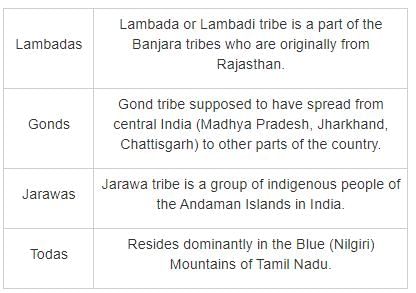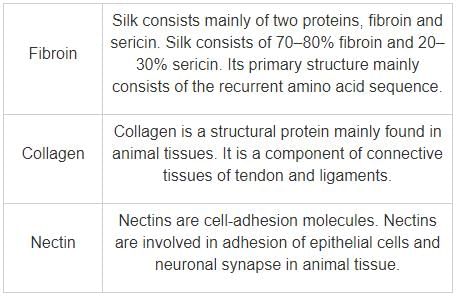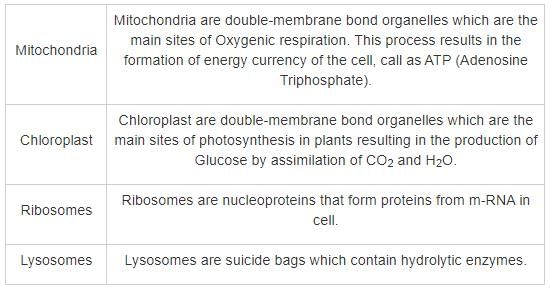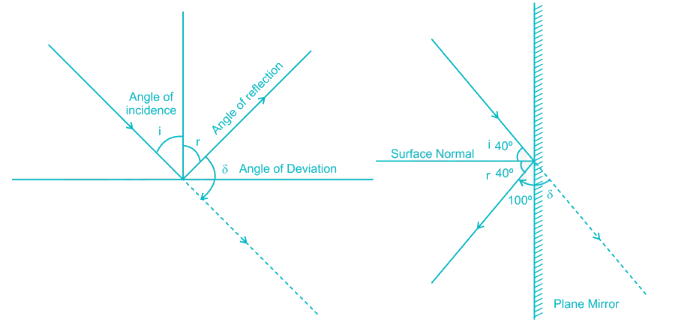CDS II - General Knowledge Previous Year Question Paper 2017 - CDS MCQ
30 Questions MCQ Test - CDS II - General Knowledge Previous Year Question Paper 2017
Which one of the following tribal groupsis dominantly found in the ‘Blue Mountains?
Who among the following geographers is related to ‘primate city’ concept?
Which one of the following islands is the largest?
Arrange the following Tiger Reserves of India from North to South:
1. Dudhwa
2. Panna
3. Pench
4. Indravati
Select the correct answer using the code given below.
Which one of the following proteins gives lustrous shiny appearance to silk fibre?
Blue Baby Syndrome is caused by the contamination of
Match List-I with List-II and select the correct answer using the code given below the Lists:
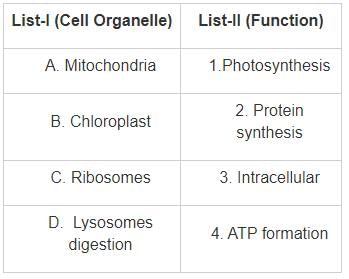
Human insulin molecule is composed ofone α-chain having 21 amino acids andone β-chain having 30 amino acids. How many functional insulin genes occur in adult humans?
Pearl is a hard object produced within the soft tissues of a mollusk. Which oneof the following is the main constituentof pearl?
A biological community in its environment such as a pond, an ocean, a forest, even an aquarium is known as
An electron and a proton starting from rest are accelerated through a potential difference of 1000 V. Which one of the following statements in this regard is correct?
Two wires are made having same length and area of cross-section A. Wire 1 is made of copper and wire 2 is made of aluminium. It is given that the electrical conductivity of copper is more than that of aluminium. In this context, which one of the following statements is correct?
A ray of light is incident on a plane mirror at an angle of 40° with respect to a surface normal. When it gets reflected from the mirror it undergoes a deviation of
Infrared, visible and ultraviolet radiations /light have different properties. Which one of the following statements related to these radiations/lights is not correct?
After using for some time, big transformers get heated up. This is due to the fact that
1. Current produces heat in transformers
2. Hysteresis loss occurs in transformers
3. Liquid used for cooling gets heated
Select the correct answer using the code given below.
A person is standing on a frictionless horizontal ground. How can he move by a certain distance on this ground?
In the reaction between hydrogen sulphate ion and water

the water acts as:
How many hydrogen atoms are contained in 1.50 g of glucose (C6H1206)?
The paste of a white material in water is used to maintain a fractured bone fixed in place. The white material used is called
Among the following types of glasses, which one is used for making optical instruments?
Most ozone gas (about 90%) is located in the atmospheric layer of
What are the main constituents of biogas?
In which two Indian States of the four mentioned below, it is necessary to hold certain minimum educational qualifications to be eligible to contest Panchayat Elections?
1. Punjab
2. Haryana
3. Karnataka
4. Rajasthan
Select the correct answer using the code given below.
Which of the following statements about ‘delegation’ is/are correct?
1. It is the abdication of responsibility.
2. It means conferring of specified authority by a lower authority to a higher one.
3. It is subject to supervision and review.
4. It is a method of dividing authority in the organization.
Select the correct answer using the code given below.
Which of the following features were borrowed by the Constitution of India from the British Constitution?
1. Rule of Law
2. Law-making Procedure
3. Independence of Judiciary
4. Parliamentary System
Select the correct answer using the code given below.
Which one of the following Schedules of the Constitution of India has fixed the number of Members of the Rajya Sabha to be elected from each State?
Which one of the following statements about various horticulture crops of India for the year 2016-17 is not correct?
The phenomenon of ‘demographic dividend’ of a country relates to ________.
Arrange the following events in sequential order as they happened in India:
1. Mahalanobis Model
2. Plan Holiday
3. Rolling Plan
Select the correct answer using the code given below.
The monetary policy in India uses which of the following tools?
1. Bank rate
2. Open market operations
3. Public debt
4. Public revenue
Select the correct answer using the code given below.


